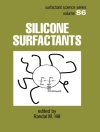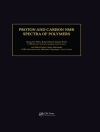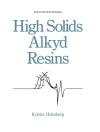From complex structure elucidation to biomolecular interactions – this applicationoriented textbook covers both theory and practice of modern NMR applications.
Part one sets the stage with a general description of NMR introducing important parameters such as the chemical shift and scalar or dipolar couplings. Part two describes the theory behind NMR, providing a profound understanding of the involved spin physics, deliberately kept shorter than in other NMR textbooks, and without a rigorous mathematical treatment of all the physico-chemical computations. Part three discusses technical and practical aspects of how to use NMR. Important phenomena such as relaxation, exchange, or the nuclear Overhauser effects and the methods of modern NMR spectroscopy including multidimensional experiments, solid state NMR, and the measurement of molecular interactions are the subject of part four. The final part explains the use of NMR for the structure determination of selected classes of complex biomolecules, from steroids to peptides or proteins, nucleic acids, and carbohydrates.
For chemists as well as users of NMR technology in the biological sciences.
Tabela de Conteúdo
Preface
INTRODUCTION TO NMR SPECTROSCOPY
Our First 1D Spectrum
Some Nomenclature: Chemical Shifts, Line Widths, and Scalar Couplings
Interpretation of Spectra: A Simple Example
Two-Dimensional NMR Spectroscopy: An Introduction
PART ONE –
Basics of Solution NMR
BASICS OF 1D NMR SPECTROSCOPY
The Principles of NMR Spectroscopy
The Chemical Shift
Scalar Couplings
Relaxation and the Nuclear Overhauser Effect
Practical Aspects
Problems
1H NMR
General Aspects
Chemical Shifts
Spin Systems, Symmetry, and Chemical or Magnetic Equivalence
Scalar Coupling
1H-1H Coupling Constants
Problems
NMR OF 13C AND HETERONUCLEI
Properties of Heteronuclei
Indirect Detection of Spin-1/2 Nuclei
13C NMR Spectroscopy
NMR of Other Main Group Elements
NMR Experiments with Transition Metal Nuclei
Problems
PART TWO –
Theory of NMR Spectroscopy
NUCLEAR MAGNETISM –
A MICROSCOPIC VIEW
The Origin of Magnetism
Spin –
An Intrinsic Property of Many Particles
Experimental Evidence for the Quantization of the Dipole Moment: The Stern-Gerlach Experiment
The Nuclear Spin and Its Magnetic Dipole Moment
Nuclear Dipole Moments in a Homogeneous Magnetic Field: The Zeeman Effect
Problems
MAGNETIZATION –
A MACROSCOPIC VIEW
The Macroscopic Magnetization
Magnetization at Thermal Equilibrium
Transverse Magnetization and Coherences
Time Evolution of Magnetization
The Rotating Frame of Reference
RF Pulses
Problems
CHEMICAL SHIFT AND SCALAR AND DIPOLAR COUPLINGS
Chemical Shielding
The Spin-Spin Coupling
Problems
A FORMAL DESCRIPTION OF NMR EXPERIMENTS: THE PRODUCT OPERATOR FORMALISM
Description of Events by Product Operators
Classification of Spin Terms Used in the POF
Coherence Transfer Steps
An Example Calculation for a Simple 1D Experiment
A BRIEF INTRODUCTION INTO THE QUANTUM-MECHANICAL CONCEPT OF NMR
Wave Functions, Operators, and Probabilities
Mathematical Tools in the Quantum Description of NMR
The Spin Space of Single Noninteracting Spins
Hamiltonian and Time Evolution
Free Precession
Representation of Spin Ensembles –
The Density Matrix Formalism
Spin Systems
PART THREE –
Technical Aspects of NMR
THE COMPONENTS OF AN NMR SPECTROMETER
The Magnet
Shim Systems and Shimming
The Electronics
The Probehead
The Lock System
Problems
ACQUISITION AND PROCESSING
The Time Domain Signal
Fourier Transform
Technical Details of Data Acquisition
Data Processing
Problems
EXPERIMENTAL TECHNIQUES
RF Pulses
Pulsed Field Gradients
Phase Cycling
Decoupling
Isotropic Mixing
Solvent Suppression
Basic 1D Experiments
Measuring Relaxation Times
The INEPT Experiment
The DEPT Experiment
Problems
THE ART OF PULSE EXPERIMENTS
Introduction
Our Toolbox: Pulses, Delays, and Pulsed Field Gradients
The Excitation Block
The Mixing Period
Simple Homonuclear 2D Sequences
Heteronuclear 2D Correlation Experiments
Experiments for Measuring Relaxation Times
Triple-Resonance NMR Experiments
Experimental Details
Problems
PART FOUR –
Important Phenomena and Methods in Modern NMR
RELAXATION
Introduction
Relaxation: The Macroscopic Picture
The Microscopic Picture: Relaxation Mechanisms
Relaxation and Motion
Measuring 15N Relaxation to Determine Protein Dynamics
Measurement of Relaxation Dispersion
Problems
THE NUCLEAR OVERHAUSER EFFECT
Introduction
The Formal Description of the NOE: The Solomon Equations
Applications of the NOE in Stereochemical Analysis
Practical Tips for Measuring NOEs
Problems
CHEMICAL AND CONFORMATIONAL EXCHANGE
Two-Site Exchange
Experimental Determination of the Rate Constants
Determination of the Activation Energy by Variable-Temperature NMR Experiments
Problems
TWO-DIMENSIONAL NMR SPECTROSCOPY
Introduction
The Appearance of 2D Spectra
Two-Dimensional NMR Spectroscopy: How Does It Work?
Types of 2D NMR Experiments
Three-Dimensional NMR Spectroscopy
Practical Aspects of Measuring 2D Spectra
Problems
SOLID-STATE NMR EXPERIMENTS
Introduction
The Chemical Shift in the Solid State
Dipolar Couplings in the Solid State
Removing CSA and Dipolar Couplings: Magic-Angle Spinning
Reintroducing Dipolar Couplings under MAS Conditions
Polarization Transfer in the Solid State: Cross-Polarization
Technical Aspects of Solid-State NMR Experiments
Problems
DETECTION OF INTERMOLECULAR INTERACTIONS
Introduction
Chemical Shift Perturbation
Methods Based on Changes in Transverse Relaxation (Ligand-Observe Methods)
Methods Based on Changes in Cross-Relaxation (NOEs) (Ligand-Observe or Target-Observe Methods)
Methods Based on Changes in Diffusion Rates (Ligand-Observe Methods)
Comparison of Methods
Problems
PART FIVE –
Structure Determination of Natural Products by NMR
CARBOHYDRATES
The Chemical Nature of Carbohydrates
NMR Spectroscopy of Carbohydrates
Quick Identification
A Worked Example: Sucrose
STEROIDS
Introduction
A Worked Example: Prednisone
PEPTIDES AND PROTEINS
Introduction
The Structure of Peptides and Proteins
NMR of Peptides and Proteins
Assignment of Peptide and Protein Resonances
A Worked Example: The Pentapeptide TP5
NUCLEIC ACIDS
Introduction
The Structure of DNA and RNA
NMR of DNA and RNA
Assignment of DNA and RNA Resonances
APPENDIX
The Magnetic H and B Fields
Magnetic Dipole Moment and Magnetization
Scalars, Vectors, and Tensors
Properties of Matrices
Sobre o autor
Oliver Zerbe is the head of the NMR department at the University of Zurich. He studied chemistry and obtained his Ph D under the supervision of Wolfgang von Philipsborn in Zurich. After a postdoctoral stay in the group of Kurt Wuthrich at the ETH Zurich he conducted his habilitation with Gerd Folkers at the Institute of Pharmaceutical Sciences at the ETH. In 2003 he returned to his present location at the University of Zurich, where he is now a professor in the Department of Chemistry. His main interests are structures of proteins, particularly of membrane proteins. Oliver Zerbe is the author of approximately 100 scientific publications in peer-reviewed journals and has edited one book, ‘NMR in drug research’. After studying chemistry at the University of Applied Sciences of Bern,
Simon Jurt has been working for more than ten years in the NMR department of the University of Zurich. In addition to maintenance and trouble shooting of the NMR spectrometers, he introduces the students to the secrets of NMR spectroscopy, teaches practical NMR courses and is involved in several research projects. His main interests are the experimental NMR techniques, which allow obtaining a plethora of chemo-physical information from the spin physics.












